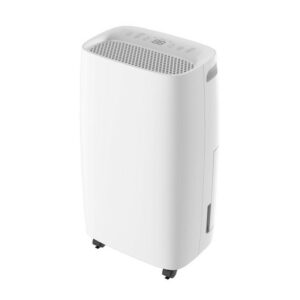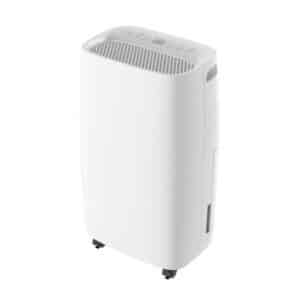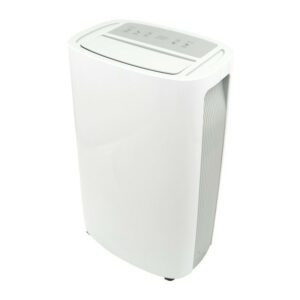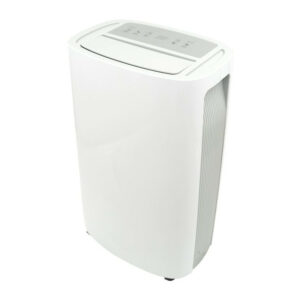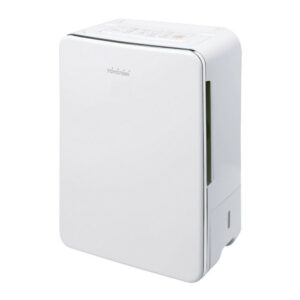Dehumidifiers
Toyotomi has a strong presence in the field of “indoor climate” electrical appliances, like for example dehumidifiers, always developing a great number of innovations and constantly improving the product performance. Toyotomi distinguishes between two types of dehumidifiers, the conventional ‘compressor type’ and the innovative ‘dessicant type’ dehumidifier.
Toyotomi dehumidifiers
Comparing 2 different types of dehumidification technology:
A compressor type dehumidifier, often called conventional dehumidifier, is a traditional technology which you can compare with a small fridge. It works by drawing in the air from the room which passes over a filter and then over cold coils (evaporator). As the coils cool the water, it condenses and drips into the water bucket within the unit. The air is then reheated to room temperature (when it passes the condensor) and blown back out of the dehumidifier.
A compressor type dehumidifier can run in temperatures ranging from 5 to 30 degrees centigrade with optimum performance above 20 degrees centigrade. They work well in warm and humid conditions. If your room temperature rarely exceeds 20 degrees than a dessicant type dehumidifier will better serve your needs as it outperforms the compressor type in these situations.
The dessicant type dehumidifier consist of a desiccant rotor, a heating device and a condenser (heat exchanger element). Humid room air is blown through the desiccant rotor which absorbs the moisture in the air. The moisture in the rotor is then evaporated by a heater and condensed through a condenser at room temperature. The rotor is made out of a corrugated ceramic composite material in which desiccant is impregnated resistant to over 500° Celsius. When humid air passes through the honeycombs, contacting the desiccant, water molecules are being left out. The rotor containing water can be desorbed by heat. The adsorption and desorption process is of purely physical nature, no chemical reaction or harmful exhaust will occur. This process is also shown in the picture at the bottom of the page.
